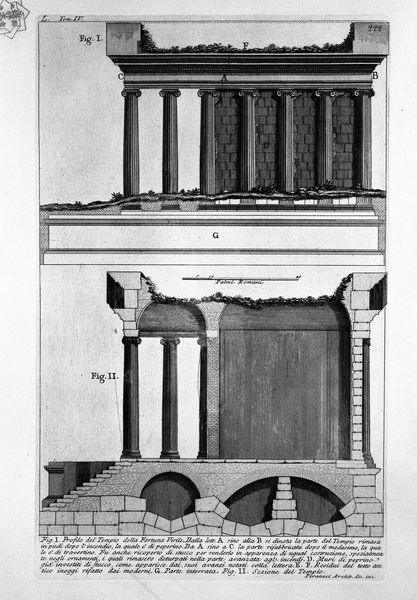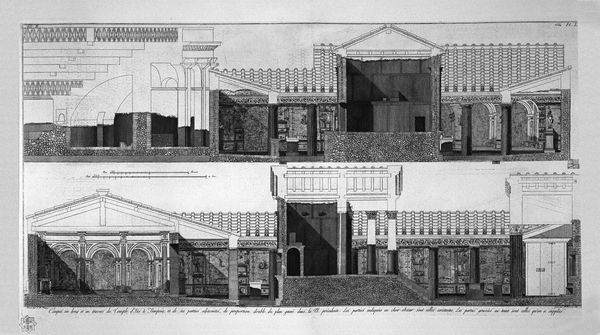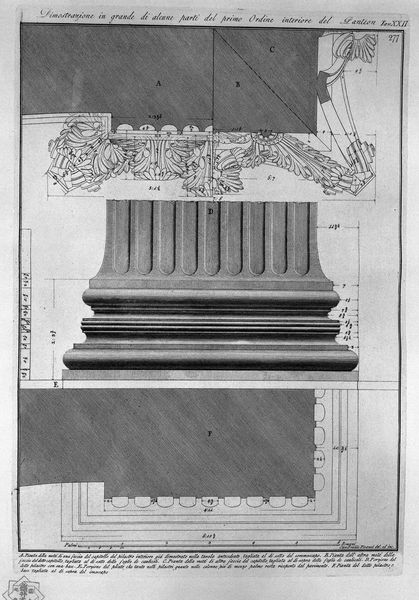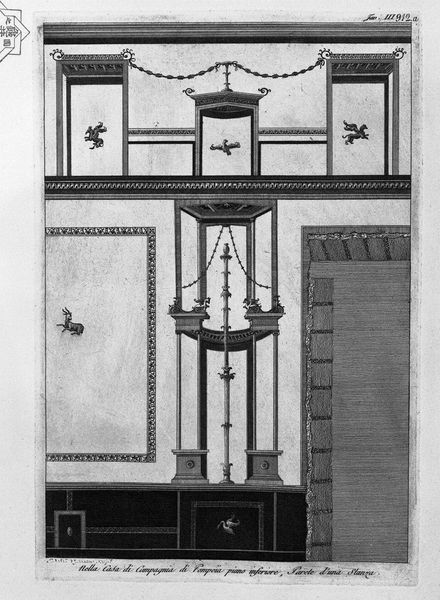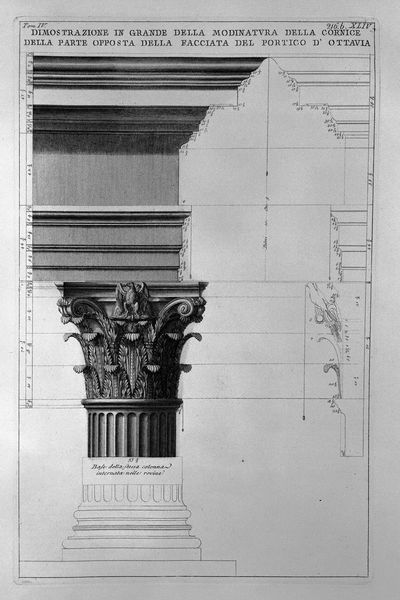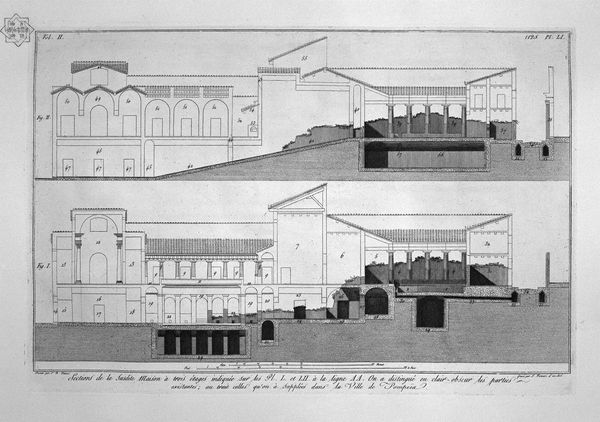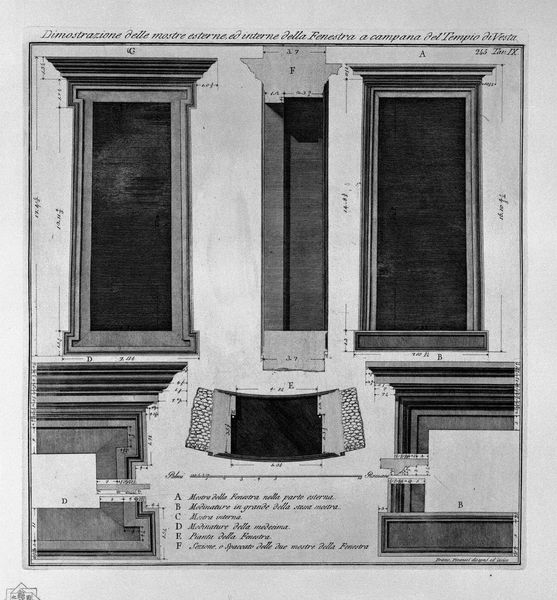
The Roman antiquities, t. 4, Plate XLV. Temple of Juno in the Portico d`Ottavia.
0:00
0:00
drawing, tempera, print, etching, engraving, architecture
#
architectural sketch
#
drawing
#
neoclacissism
#
architectural landscape
#
tempera
# print
#
etching
#
architectural plan
#
architectural design
#
architectural form
#
architectural concept
#
column
#
arch
#
architectural section drawing
#
architectural drawing
#
architecture drawing
#
architectural proposal
#
engraving
#
architecture
Copyright: Public domain
Curator: Look at the striking detail in this etching by Giovanni Battista Piranesi: "The Roman Antiquities, Plate XLV: Temple of Juno in the Portico d'Ottavia." Editor: It strikes me as stark, almost haunting, with those precise lines portraying monumental ruin. Curator: Yes, Piranesi captures a slice of antiquity, or rather his interpretation of it, in Neoclassical fashion. He emphasizes both the structure and the section of the temple within the Portico. Juno, of course, was the Roman equivalent to Hera, queen of the gods, protector of marriage and women. It evokes a sense of lost grandeur. Editor: Absolutely, but it's the rigorous geometry and play of light that pulls me in. The meticulous cross-hatching gives weight to the broken elements of this architectural landscape. Look at the rhythmic sequence established by the verticality of the remaining columns and compare that with what’s beneath… fascinating how he leads your eye. Curator: It’s a glimpse into the cultural memory that the temple represented. As the Roman Empire waned, the physical manifestation of the temple started its decline and decay, leaving potent symbols in their wake. Editor: The image becomes an allegorical space, where we witness a reconstruction or proposal. I notice a curious doubling – Piranesi offers not just an elevation but also an inside look by providing its cross section! He also presents a very self-conscious architectural project that speaks about order, even where there is damage. Curator: Indeed, it is about memory and imagining an aspirational order from the chaos of the extant ruins. We are faced with not only what existed but with what could endure, shaping both our understanding of Roman history and how we interpret this place and what happened here over time. Editor: Yes, its careful construction speaks to enduring themes, perhaps hinting that from ruins, beauty and perhaps order, even if idealized, can always be reimagined.
Comments
No comments
Be the first to comment and join the conversation on the ultimate creative platform.
